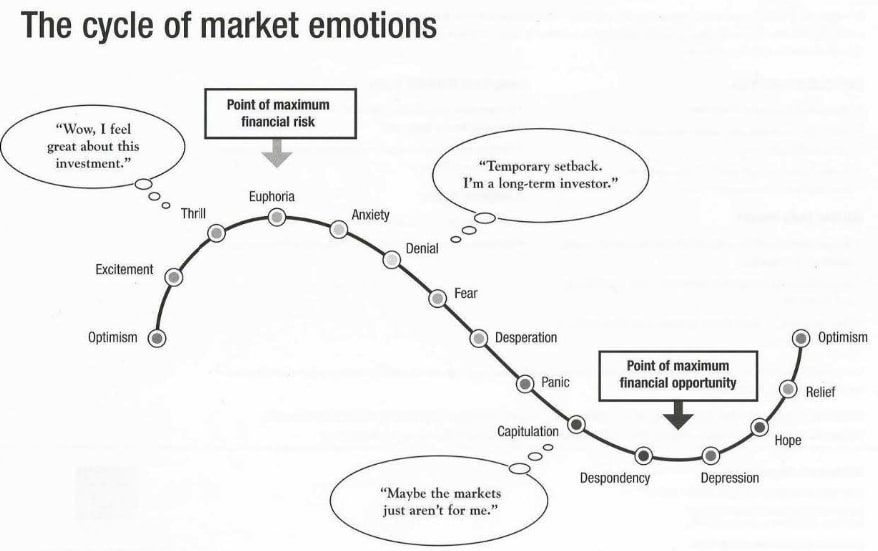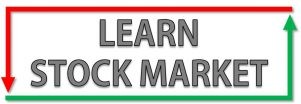A bear market begins when the stock market falls drastically. A minor fall in stock prices is called a ‘correction’, whereas when a severe fall occurs over a long period of time, it’s called a ‘bear market’. A big fall makes investors fear that their investments could go down further.
Generally, bear markets begin when there is a roaring bull market (rising market) in progress. Greed to invest and make more money will be at an all-time-high in the stock market. The sentiment on business channels will be positive, almost everyone you know would be investing in the stock market and their investments would be growing.
This leads to a phase called ‘euphoria’, which results in almost all stocks trading at very high valuations and even stocks of low-quality companies giving excellent returns.
These can be testing times for experienced investors, as the market will be on a continuous rise. Selling over-valued companies in such circumstances can be extremely difficult, because stocks could rise further after they sell.
Ratios like Price to Earning (PE), Price to Book (PB) etc will look irrelevant as investors would be willing to buy poor quality companies at high prices.
These are usually the first signs that the bull market is topping out and a bear market could be around the corner.
When the bear market is about to begin and stocks begin to fall, most will ignore such falls as minor corrections.
The first phase of the bear market can be brutal for new investors, especially those who enter the market at the peak of the bull run and gets trapped in low-quality stocks.
Experienced investors will be the first to sell and cash-out at this stage. This leads to further pressure on stock prices, as demand to buy shares is less and the supply is much more.
A few weeks after the market enters its bear phase, anchors on business channels will begin to share pessimistic views on the market. There will be a flow of negative news ranging from imminent recession, tough economic conditions, company layoffs, unemployment, falling GDP rate etc.
The market could continue to fall until stocks that were once over-valued get extremely under-valued. Quality companies could be available at cheaper valuations, some smaller companies can be purchased at throw-away prices and fraud / poor quality shares would be completely decimated.
This bear phase could continue to inflict pain, until smarter players in the market begin to sense recovery in the economy. A new market cycle usually begins a few months after the market moves side-ways. This phase is called the ‘consolidation’ or ‘time correction’ phase.
When smart market players begin to sense that economic-recovery is around the corner, big money will begin to make its way into the market.

The above image illustrates the cycle of the market. When the market is on the rise, there is optimism. Soon, that changes into excitement and thrill – it’s at this stage that many new investors get lured by rising market. They want to try their luck and think making money in the stock market is easy.
They enter the market with very little knowledge and buy shares of companies that are doing well. Since the peak of the bull market has low-quality companies rising the highest, this is where most of the new-investor money will go.
That’s when the market begins to turn downwards. When the fall is 10%, most new investors are in denial – they turn long-term investors thinking the fall is temporary and the market will rise again.
A fall of 10% more is the bear phase of ‘fear’ where everyone is spreading negative news about the market, the state of the economy etc.
Another 10% fall leads to ‘desperation’ among investors – that they somehow want to atleast recover the amount they invested. At this point, the market inflicts more pain by falling more, which leads to ‘panic’. It is during these times that most new investors have their portfolio down by 50-60%. Now, they just want to save whatever money is left, they sell out.
This last phase of the bear market can be brutal, as most investors sell out of panic. It’s after this phase that the market will move sideways, consolidate, remove all the weak hands. Low-quality stocks or fraud companies that moved the most during the last phase of the bull market – will become penny stocks, they won’t rise back in the next cycle of the market.
Quality companies will show signs of recovery and will be the first to move up. This is usually one of the first signs of recovery towards hope, relief, optimism and finally another bull market.
The market cycle continues.


Leave a Comment